It all started with a request from Rodica Radu from Rasnov. She bought an old teak table, even though it had a dark colour that she didn't like, thinking she would change the colour. In the meantime, she learned that teak wood naturally contains oils, which makes paints and varnishes less adhesive. He decided to ask us for help, but the solution we suggested at the time turned out not to be the right one. I knew teak was rich in oils and therefore very suitable for outdoor furniture, but I was not familiar with indoor furniture. As a result, I started researching to find out how to finish this exotic wood so that I could provide the required support. I found a solution, even two, but first let me tell you about teak.
Area of origin and characteristics of the tree
Let's first clarify the name. In Romanian it is called lemn de tec, according to DEX. There are many people who write teak, so it's good to include this name in your search. You will find many Romanian sources where teak wood is mentioned. The English version - teak - is rarely used here, but if you decide to search for information on foreign sites, you should do so with this name.
The teak's scientific name is Tectona Grandis and it is also known as Burmese Teack. It is native to South and Southeast Asia, i.e. India, Indonesia, Sri Lanka, Thailand, Myanmar, Malaysia. In Myanmar it is found in almost half of the natural teak forests.
After the value of this wood was discovered by the Dutch, teak forests were intensively exploited, as was done with other exotic wood species. Fortunately, teak has started to be cultivated in other areas - Africa, Latin America - and the forests in the countries of origin are now only exploited by the state.
Teak is a tropical hardwood belonging to the hardwood category. Trees can reach 30-40 m in height and 1-1.5 m in diameter. Quality wood is obtained from trees that are between 40 and 80 years old, so it's no wonder why it's an expensive wood.
Teak wood
In cross-section the demarcation between albumen and heartwood is clearly visible. The sapwood is whitish to very pale yellow-brown, while the heartwood is yellow-brown and darkens in colour as the tree 'ages'.
The fibre is straight, sometimes with ripples or twists. The texture is coarse, uneven, with a moderate natural sheen. Unfinished wood has a greasy, slightly oily appearance due to the high content of natural oils.
It has distinct and visible annual rings and can form interesting designs depending on the cut. Pores are round or semi-round, large and sparser in earlywood, medium and more though in latewood. Medullary rays are visible to the naked eye.
When cut teak wood gives off a slight leathery smell.

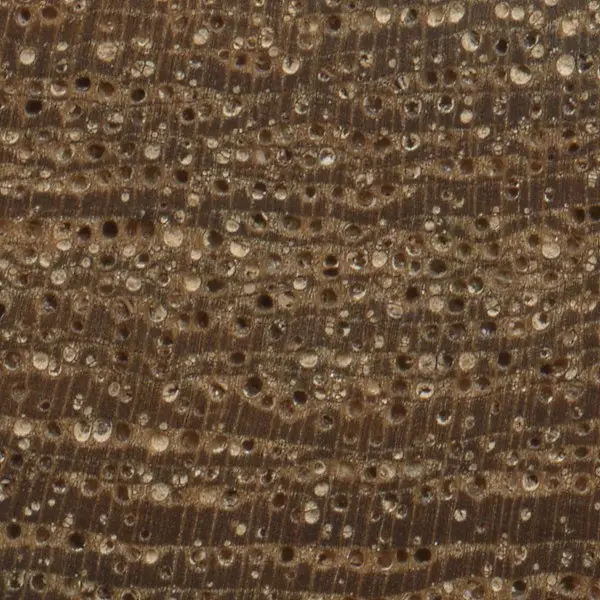
Main characteristics of teak wood
Teak wood is very hard and durable. The high oil content makes it very suitable for outdoor use as it becomes resistant to water, rot and insect attack, even termites. It is considered the most rot-resistant wood. It can also be used outdoors unfinished, but over time it changes colour to a silvery grey.
Although it is not a hard working wood it sometimes manages to carve the cutting blades. It happens because of the silica (silicon oxide) content. But this content comes with a good side because it increases its fire resistance a lot.
It does not crack or twist when drying. Because of these qualities it performs very well in areas with wide variations in humidity. Before being cut into planks it is left to dry for 2 years as a log.
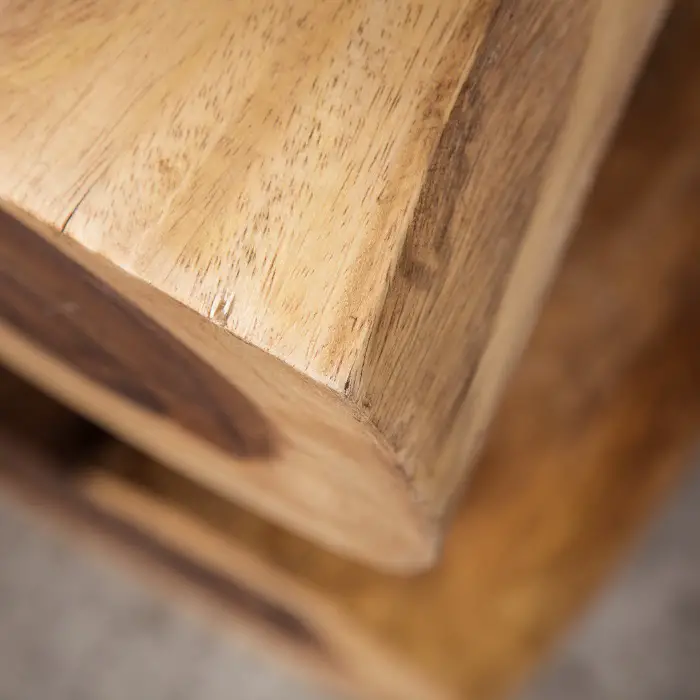
Uses of teak wood
These special characteristics have been discovered since ancient times, with teak having been used for boat building as far back as 2000 years ago. It continues to be used today for craft construction or to cover the decks and manufacture the furniture inside luxury boats.
It is used in the manufacture of garden furniture, around swimming pools, decks or garden areas where humidity is high.
It is used in the manufacture of furniture (very suitable for the one in the bathroom), a floors, for carved or turned objects, the manufacture of veneer or decorative objects. In the countries of origin it is also used to make doors and windows or for resistance structures and roofs for houses.
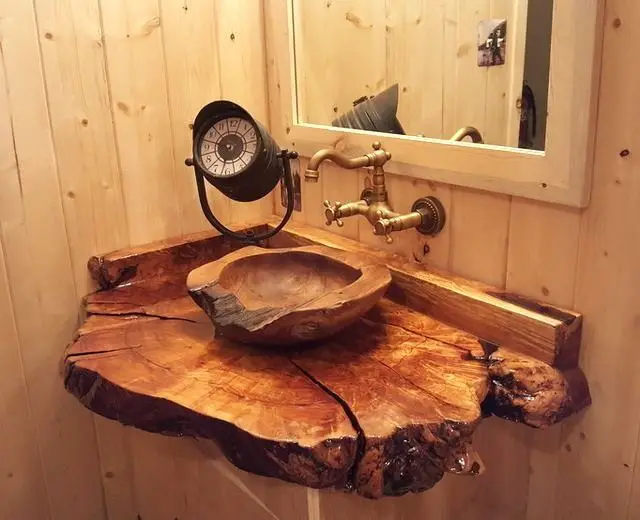
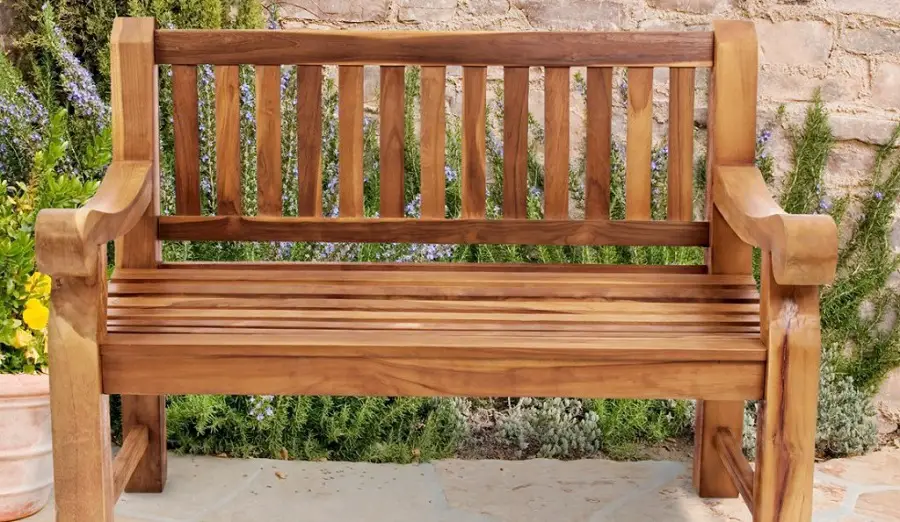
Teak furniture for interior
For a long time it was considered that wood was more suitable for garden furniture because of its properties. In the 1950s and 60s teak furniture became very popular and was called Danish Modern. At that time everyone wanted a piece of teak furniture in their home. In the meantime the fashion has passed, but the value of that teak furniture has not diminished, on the contrary, it has become more and more valuable.
Specialists believe that teak furniture has a number of qualities that makes it truly special:
- the natural beauty of design and colour;
- hardness;
- resistance to insects (termites, curries, cockroaches);
- resistance to fungi and moulds;
- natural oil impregnation with the best rot resistance;
- very good moisture resistance;
- combustion resistance.
When manufacturing furniture, sticking problems can occur due to the oil content. For this reason it is recommended to wipe the area to be glued with thinner. To increase adhesion, the same is recommended for the finish.
Maintenance of teak furniture
Teak furniture is generally finished with oil. The most used are linseed oil and tung oil. Note that commercial teak oil is not extracted from teak wood. No oil is extracted from teak and the reference to teak is related to the colour of the oil or impregnant. Usually that oil is a mixture of several oils, the predominant one being linseed oil.
Over time the oil applied to the wood disappears and the wood surface changes colour or stains. Sanding is necessary to remove the oxidised layer from the surface and get to healthy wood. The wood is then re-ground. To avoid stains it is best to have the furniture re-ground every 2-3 years.
As far as teak wood staining is concerned, it is not recommended because of the high oil content which reduces the adhesion of the stain to the substrate.
Teak wood staining solutions
As the finish is made with oil, coloured oil can be applied to the furniture. The oil is coloured with mineral pigments. The operation requires work and care. The powdered pigment is mixed with a small amount of oil and rubbed into a homogeneous paste. To make sure no lumps remain, it is recommended to mix on a flat surface, not in a glass (directly on a stainless steel or glass table). After homogenisation, dilute with oil to the desired intensity. Before application it is recommended to sand the surface and wipe it with thinner.
Another solution would be to use alkyd (oil-based) paints. Furniture is prepared beforehand in the same way as above. It is best to dilute the paint with white spirit or turpentine to penetrate more deeply into the wood.
To those who want to start such a project, I wish them success and I thank Rodica Radu for her inspiration.

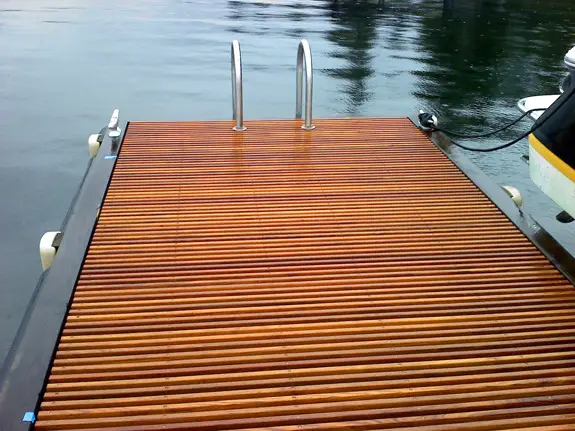
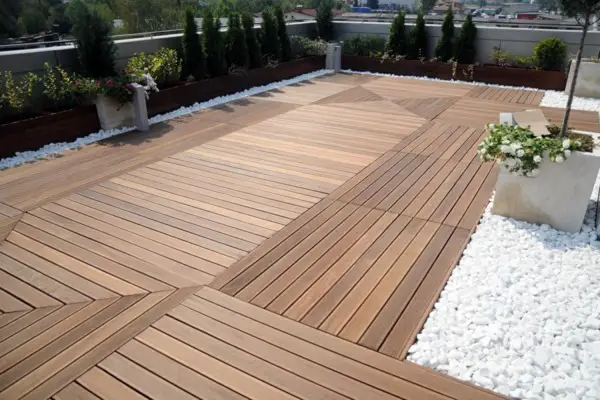


























The special adhesive for teak in Yachtbouw in the Netherlands is from Westsystem bicomponent. It is applied in a thin, transparent and very durable layer. You can hardly see the glue line!
WEST SYSTEM 105 Epoxy Resin and Hardeners. Hardeners range from very slow to fast. Slow ones are recommended for bonding and fast ones usually for minor repairs and additions. Hand protection is also recommended. Good luck!